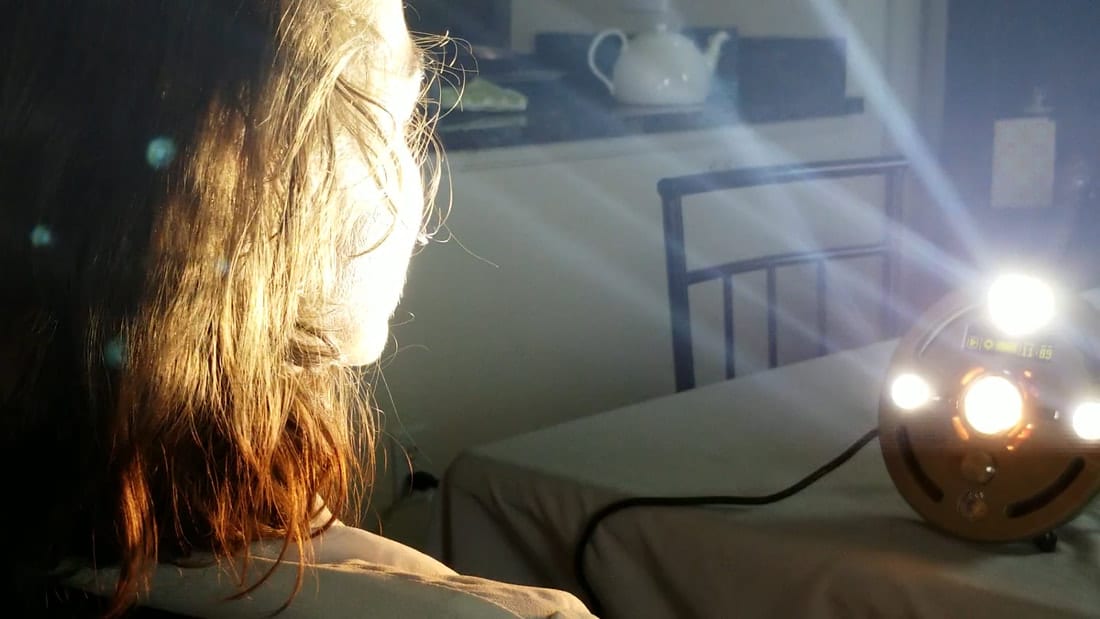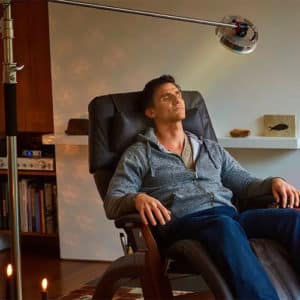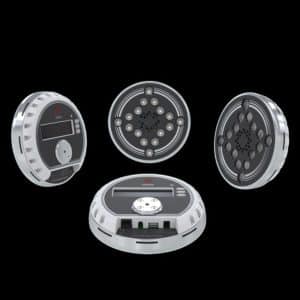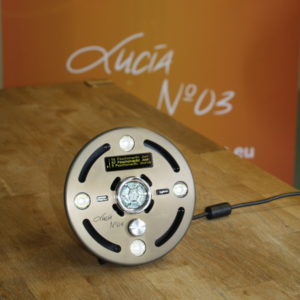Lucia N°03 & PandoraStar operation principle
About 100 billion neurons are distributed in the body, mainly in the intracranial area but also elsewhere, in particular the heart and the digestive system.
Neuronal activity produces electrical currents which are measured at the surface of the skin. Chains of neurons have a synchronized activity, the more they are numerous the more the electrical signal is important in intensity. Groups are clearly in sync when they go from maximum activity (peak) to minimum activity almost all at the same time.
The number of times this peak is reached in a single second gives the frequency in Hertz. Example: an electrical signal from a group of neurons that pass at their maximum 8 times per second is an 8 Hertz signal.
Classification of brain waves:
- Delta waves: 0 to 4 Hz. Deep sleep
- Theta waves: 4 to 8 hertz. Sleep.
- Alpha waves: 8 to 12 Hz. Light relaxation, creativity.
- Beta waves: 12 to 45 Hz. Standard daytime activity.
- Gamma waves: 35 to 80 Hz. Higher intellectual activities.
Specific frequency bands have been the subject of studies which have revealed certain characteristics and have opened up research avenues for scientific and technological. Applications:
- Epsilon waves, 0.1 to 0.5 Hz
- SMR waves, from 13 to 15 Hz
- Hyper Gamma waves: 80 to 100 Hz
- Lambda waves: 100 to 200 Hz
Numerous rhythms coexist at every moment in the brain, each state is characterized by the intensity of the dominant signal and by the intensities of the other waves.
Functional process of photo-stimulation technologies
- Neural networks tend to tune in, to take a rhythm similar to the stimuli they process: sounds and lights for example. A light frequency of about 10 Hz will promote the synchronization of neurons on this same rhythm, called Alpha in the classification.
- Flicker phosphenes without retinal persistence, complex entoptic phenomena associated with optics and vision as the neuronal translation of a light signal.
Stimulation programs are similar to symphonic sheet music, they are complex and the effects they cause come much from the virtuosity of those or whoever composed them.

The frequency bands used are fundamental but are not the only condition determining each individual experience.
According to studies carried out by VAJRA PRODUCTIONS in 2016 and 2017, the variety of experiences seems very wide due to the following factors:
Parameter 1 : programs. They are identical at each launch, like a piece of music. This is the only fixed parameter.
Parameter 2 : The experimenter. It is a constantly changing variable, which in itself produces different experiences with, for example, the same PandoraStar program.
Parameter 3 : The operator. The one who organizes and animates the session acts in several ways on the experimenter, modifying the experiments to the point where on the number, certain characteristics of the operator can be identified.
Parameter 4 : the place. It can be a fixed parameter when the technology is always used in the same place, or a variable parameter when the lamp is nomadic.
Parameter 5 : the external factor. It is as if elements exogenous to the experimenter, to the operator, and to the place, sometimes act in an open manner on the nature of the experience.
What are the contraindications?






